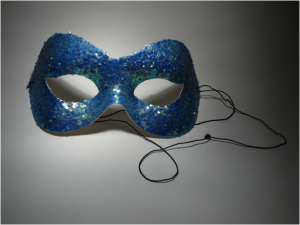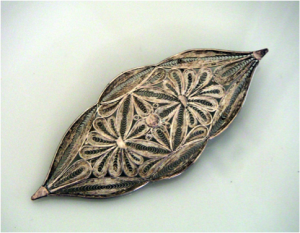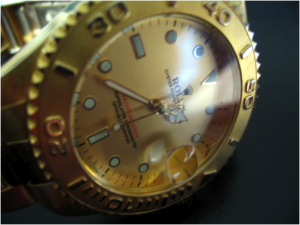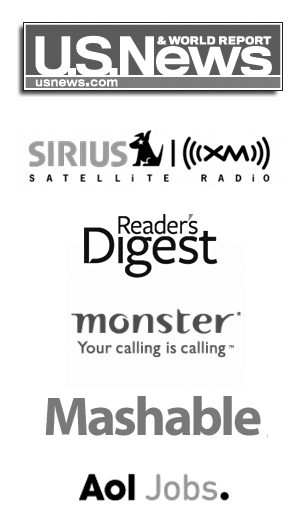 Veronica Park is an author, journalist and world-traveler of many different past and future vocations. Keep an eye out for her first published novel, which will hopefully be announced soon. In the meantime, you can read about her exploits in the Caribbean and find out her opinion on pretty much everything by following her on Twitter (@VeroniKaboom) and checking out her website.
Veronica Park is an author, journalist and world-traveler of many different past and future vocations. Keep an eye out for her first published novel, which will hopefully be announced soon. In the meantime, you can read about her exploits in the Caribbean and find out her opinion on pretty much everything by following her on Twitter (@VeroniKaboom) and checking out her website.
If you google the phrase “what to wear to a job interview,” you’ll get pages and pages of helpful links.
If you click on the images tab, you’ll see that some helpful folks over on Pinterest have even put together entire boards (usually for women, since let’s be honest: guys don’t have quite as many wardrobe options) which show examples of how you can dress for a job interview. (Warning: use your judgment, as some pinners are a little more whimsical in their definition of ‘job interview’ than most potential employers—depending on the field.)
There’s even a helpful slideshow on About.com concerning popular fashion faux pas you should avoid. It covers all the most predictable Job Interview Don’ts, like skimpy skirts and t-shirts with your favorite metal band from your youth. Personally, I found the most important note to be about perfume and/or cologne. (In case you were wondering, for an interviewer, the way a job candidate smells should NOT be the one thing you remember about that person.)
But not a lot of links tell you how you should dress for a job interview, if you want to leave a very specific, personal impression. In fact, the general consensus about job search wardrobe seems to be that a candidate should do his or her best to blend in with the other candidates as much as possible. To avoid standing out, and let his or her resume and interview skills take over from there. Because, while everyone seems to agree that what you wear is integral to creating that all important ‘at first sight’ impression, not many people seem to consider the much-obsessed-over interview costume for the golden opportunity it actually is.
That’s right, kids. I just pulled a sneaky mid-intro costume change, because this article is actually The Guide to Creating a “Super” Career Persona, Part Three: How to Turn Your Interview Costume into a Memorable Character Reveal.
The perfect interview outfit doesn’t just prevent offense. It creates a positive memory for the interviewer, and a valuable interpersonal connection. By all means, you should avoid the wardrobe malfunctions in the slideshow above, but why stop at what you don’t want people to think about you? That’s kind of negative, right? And really, it doesn’t help you stand out if all the other job candidates are following the exact same rules.
So, let’s talk about what you want people to think of you, what you need them to remember, and how you can use your clothing as a tool to make those connections happen.
Item #1 – The Conversation Piece
Every job interview outfit should have one single point of interest, a little personal bit of “flair,” if you will. This can be anything from an antique brooch or a lovely silk scarf, to a collector’s watch or tie pin. The most important part of this item is that it needs to have a connection to something positive about your character. It’s not an attention-getting mechanism (well it is, in a sense, but not merely for the sake of attention). Think of the conversation piece as a potential gateway that can take you from awkward pre-interview small talk into a subject matter that makes you shine from the get-go.
(+) Example of using a conversation piece to segue into job-positive personal information:
Scene: A recent nursing school graduate is interviewing for a full-time position in the ICU of a metropolitan hospital. The hospital is called Saint Mary’s, part of a larger healthcare system which bases its marketing on its longstanding tradition of conscientious care. The interviewee is wearing a tweed skirt with sensible pumps, black tights, and a grey sweater belted over a pink button-up shirt. Her only piece of jewelry is a large, yet conservative vintage brooch.
Interviewer: “That’s a very lovely pin you’re wearing. I don’t think I’ve ever seen one like it.”
Job Seeker: “Thank you. It was passed down to me by my great-grandmother. She was a nurse in World War II. I actually wrote my final thesis on the history of amputee care, using some of the journals she kept.”
Interviewer: *Tries to hide how immediately impressed she is.* “Really? That’s so interesting. Tell me more about your thesis.”
(-) Example of using a conversation piece to segue…nowhere:
Scene: A recent high school graduate is interviewing for a part-time position as a bank teller. She’s wearing a conservative skirt suit (because that’s what everyone said she should wear) with a tank top underneath, and a large statement necklace.
Interviewer: “I really like your necklace.”
Job Seeker: “Thanks, I got it at Macy’s.”
Interviewer: *Awkwardly clears throat* “That’s nice. Anyway, what makes you think you’d be a good fit for this organization?”
Note: While the “good fit” question is not necessarily the kiss of death, it has been my experience that this question is a great diagnostic tool for any interviewee. If this question comes at the end of the interview, that’s normal. If it comes at the beginning, it can often be intended as a conversational land mine, to off-balance and test potential candidates who don’t appear to have much else going for them. Job seekers, beware of this question, and always have a well-researched and proactive answer handy.
Item #2 – Status Pieces : The Illusion of Affluence
This is probably going to seem counterintuitive to a lot of people, but myriad psychological studies have shown that employers are more likely to offer a job to candidates who demonstrate that they want the job, but don’t necessarily need the job. As much as it pains me to say it, interviewers aren’t immune from human nature, and human nature seems to include a built-in aversion to the stink of desperation. Which is why telling the interviewer how badly you need the job, especially for financial reasons, is a terrible tactic that is pretty much guaranteed to send your resume into the shredder.
That said, it’s also not a good idea to flaunt your superior economic comfort level (even if you have to fake it for the sake of the interview, like Will Smith did in that movie, “The Pursuit of Happyness.”) Instead, you need to seek out a comfortable—and very modest—middle ground between starving student and trust fund baby. This can best be accomplished by choosing a single “status” item, and behaving as though the financial stability it represents is unimportant. (Why? Because in reality, it is unimportant. You’re there to talk about why you’re a good job candidate. Shame on them for making assumptions about your current level of success based on jewelry in the first place.)
(+) Example of using the illusion of affluence to promote an air of stability:
Scene: A young man, fresh out of business school, is interviewing for a position at a prominent investment company. He is wearing a department store suit that fits, but isn’t custom tailored, with sensible shoes, black socks and a reasonably-priced tie. The only thing shiny about him is a gold watch, which he wears partially tucked into the cuff of his dress shirt.
Interviewer: “That’s a nice Rolex you have there, son. I’m more of a Breitling man, myself.”
Job Seeker: “Thank you, sir. Breitling does make a great watch.”
Note: If you’re considering going into finance or marketing, learn to recognize and intelligently talk about premium watches. Trust me on this one.
(-) Example of using the illusion of affluence to completely undermine your air of stability:
Scene: (same as above)
Interviewer: “That’s a nice Rolex you have there, son.”
Job Seeker: “Oh, this? Haha, it looks totally real, right? No, I got this down on Canal Street for $20 bucks. Can you believe that? It fools everyone.”
Interviewer: *Scowls, then makes a mental note to shred the kid’s resume the second he walks out*
Note: There are numerous things wrong with this response, as most corporate employers tend to frown on job candidates who support the counterfeit luxury goods industry. Also, it’s kind of illegal. Just FYI.
Item #3 – The Unique Human Touch
As an interviewer, you have to remember that I’m going to see dozens if not hundreds of candidates. And due to the miracle of Google, most of them will have a tentative grasp of the basic rules of interview etiquette and costume—which means that most people are going to show up with conservative black or gray suits, various shades of pastel button-up shirts, and sensible black or brown shoes.
After a while, watching this parade from a spectator’s point of view can get kind of monotonous. It’s then that hiring professionals begin actively looking for chinks in the carefully-erected impersonal corporate façade. Little details like chewed fingernails, hair that hasn’t been washed, lettuce stuck in the teeth. Anything undesirable, really, that will make our difficult job of narrowing down a field of equally-promising candidates seem just a little bit easier. After all, like I said, we’re humans too.
This is where strategy comes in. If you’re stuck in a room with someone who is intent on figuring out your hidden flaws, things can get a little nerve wracking. Unless you know in advance, exactly what flaws they’re going to find. Because you created that flaw on purpose, to give them a reason to stop looking.
(+) Example of using a “human touch” to prove you’re imperfect, but in the best possible way:
Scene: An attractive, twenty-something woman is hoping to land a job at a mostly-male advertising company. Her resume is light on experience, and she’s concerned that they might not take her seriously because of her fun, fashionable personality and Generation Y vernacular. So, in addition to adopting a more conservative spin to her usually frilly and feminine attire, she dons a pair of black-rimmed glasses. The way she figures it, pretending to have less than perfect eyesight will give her a more obvious “flaw” for the interviewers to focus on. But at the same time, it’s a flaw that no one can really blame her for.
Why does this work? Nobody really knows for sure, but it does. According to an article in Forbes Magazine, wearing glasses to a job interview is a surefire way to offset the appearance of frivolity and set a tone of reliability. The Daily Mail UK says wearing glasses will make you appear smarter. At any rate, fake glasses are an inexpensive and extremely simple addition to any job seeker’s wardrobe. So why not experiment to see if this trick works for you?
Scene: A baby-faced young associate with red hair and freckles is interviewing for a promotion at his law firm. The problem is, people are always telling him he doesn’t look old enough to buy liquor—let alone have attended law school and practice as a criminal defense attorney. His solution? Grow a thick, but well-groomed beard.
Why does this work? Because, according to a recent study published in the Journal of Marketing Communications (which was dissected in an article on Chronicle.com) men with beards seem more credible and trustworthy. Also, manly.
Finally, before you implement any of the above wardrobe tools, remember the most important tool any job seeker has at his or her disposal (yet sadly, so few tend to utilize it): RESEARCH. Find out what the company stands for, and what kind of deficit they’re looking to fill—not just in terms of open positions, but in a more “big picture” sense; what kind of impact are they hoping to make on the world at large? Create a character, based on your true self, which fills this deficit perfectly. Are you mind-bogglingly creative? Are you a risk-taker? A goal-setter? A smooth-talker? Flaunt those characteristics in as many ways as you can, including and maybe especially in your choice of attire.
For more tips on creating your own superhero-style job candidate persona, check out Part One: Be the Batman and Part Two: Sorry, Clark.












